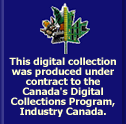|
Across |
Down |
| 3. The most important plant
on Sable Island. It traps sand and holds the dunes together. |
1. Pieces of a shipwreck that
are gathered up and sold are called________. |
| 6. What the men of the Humane
Establishment tried to do to sailors when 10 down did happen. |
2. Sable Island is this direction
away from Halifax, Nova Scotia. |
| 7. On clear days, lifesaving
crews climbed towers and looked through this to spot wrecks. |
4. Some Scallop and Oyster
_____ found on Sable Island's beaches are thousands of years
old, from a time when the ocean was warmer. |
| 8. _________ are extinct on
Sable Island because they were hunted for their tusks and
oil. |
5. Another word for ship. |
| 9. Tricky _______ in the waters
around Sable Island made it hard for sailing ships to navigate. |
10. Modern ships use this to
"see" Sable Island through the fog. |
| 12. What sailors hoped would
not happen to them on Sable Island. |
11. A type of sailing ship--many
of the vessels that sank off Sable Island were these. The
Bluenose on the Canadian dime is one of them too. |
| 13. Sable Island nickname:
The _______yard of the Atlantic. |
13. Thousands of _______ seals
breed on Sable Island. |
| 15. One of the biggest causes
of shipwrecks. Sable has 125 days of this a year. |
14. Lifesaving crew shot a
rope out to the shipwreck with a line-throwing ________.
|
| 16. A hill of sand. |
|
| 17. The ________ buoy was a
pair of pants sewn to a life ring; it was used for rescues
close to the island. |
|
| 18. Shipwreck survivors stayed
in the _______ home until the steamer came to take them to
Halifax. |
|









